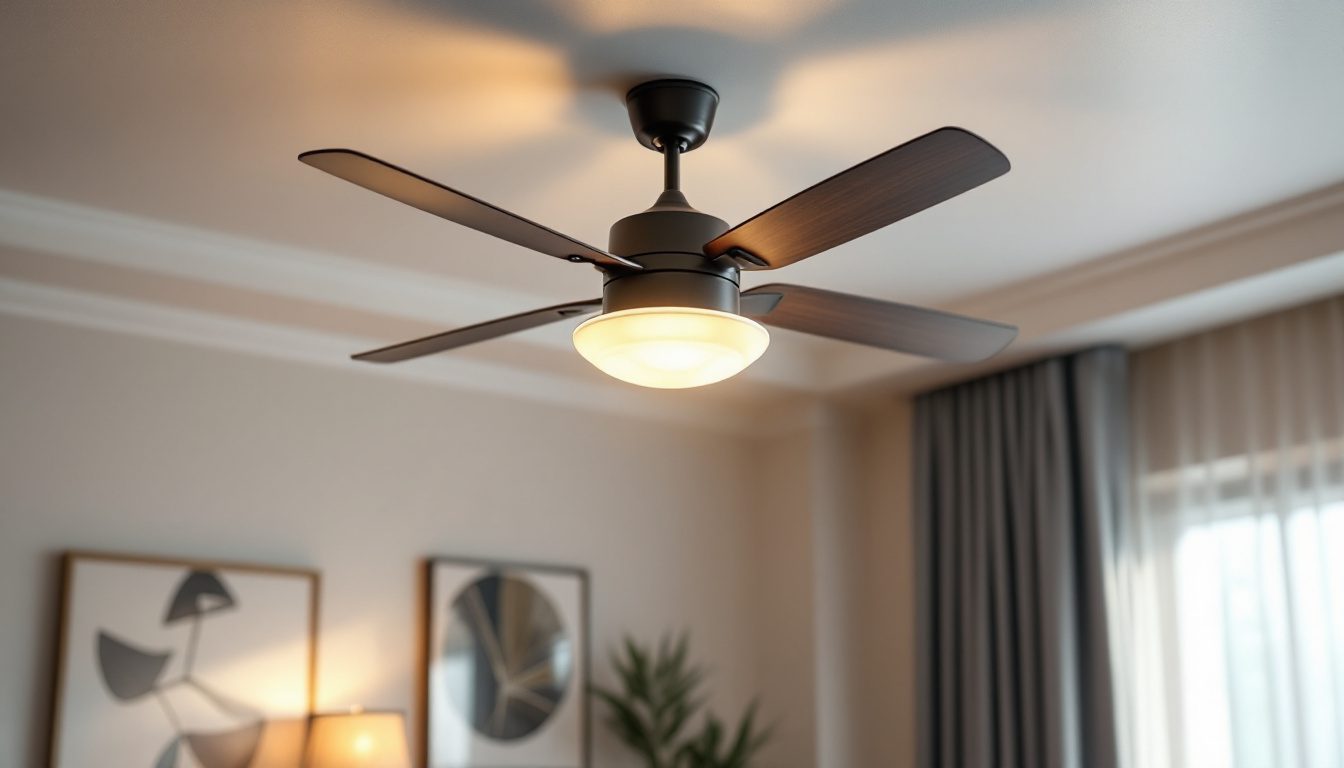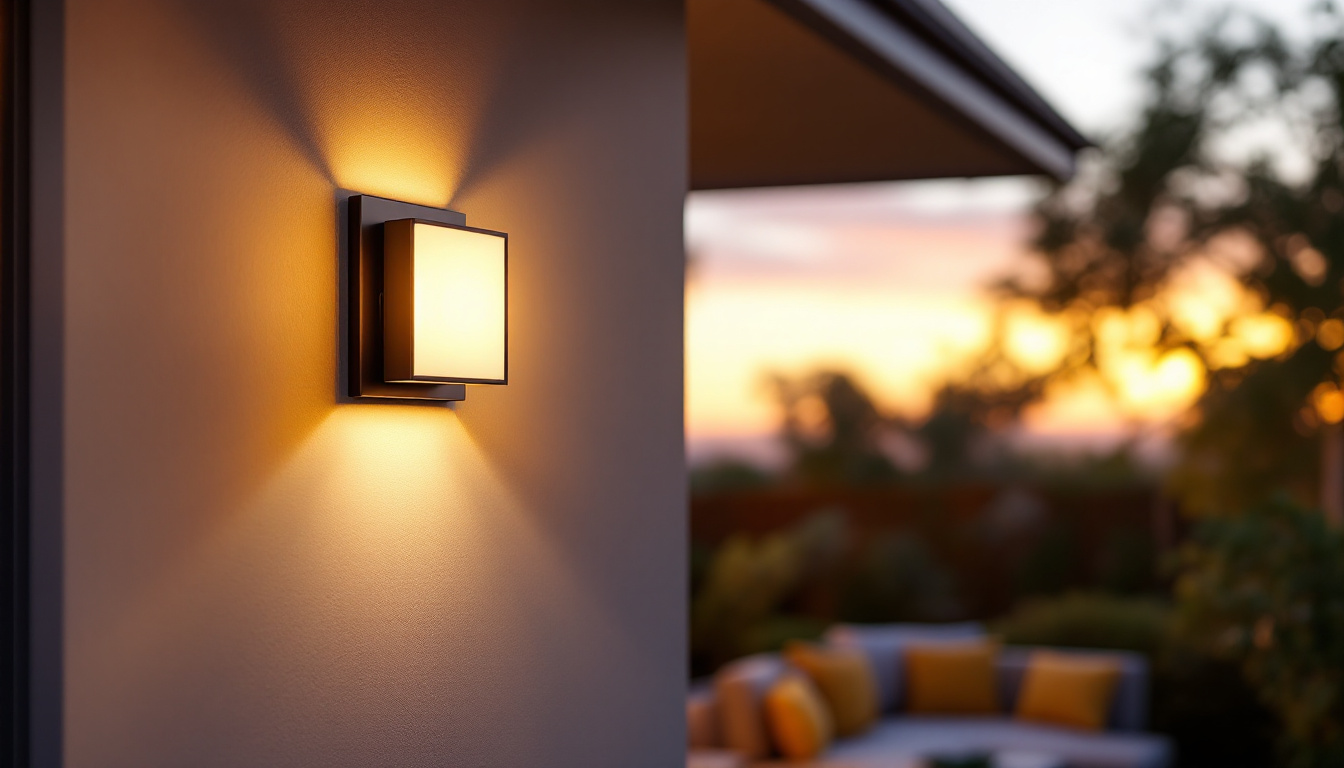
When it comes to lighting installations, the choice of light fixtures for ceiling fans is often overlooked. However, these fixtures play a crucial role in both functionality and aesthetics. This article delves into the importance of selecting the right light fixtures for ceiling fans, particularly from the perspective of lighting contractors.
Light fixtures serve as the primary source of illumination in many spaces, and when integrated with ceiling fans, they can enhance both the utility and ambiance of a room. Properly chosen fixtures not only provide adequate lighting but also complement the design and style of the ceiling fan and the overall decor.
For lighting contractors, understanding the interplay between ceiling fans and light fixtures is essential. The right combination can elevate the functionality of a space while ensuring that the lighting meets the specific needs of the environment.
Ceiling fans equipped with light fixtures can serve dual purposes—providing both airflow and illumination. This dual functionality is particularly beneficial in spaces where maximizing utility is paramount. In areas like living rooms, bedrooms, or dining spaces, the combination of a ceiling fan and light fixture can create a comfortable atmosphere while ensuring that the room is adequately lit.
Moreover, the type of light fixture selected can influence the effectiveness of the ceiling fan. For instance, fixtures that direct light downward can enhance visibility in a room, while those that provide ambient lighting can create a softer, more inviting atmosphere. Understanding the needs of the space is critical for contractors when recommending specific fixtures. In addition, the use of dimmable LED bulbs can further enhance this functionality, allowing homeowners to adjust the brightness according to the time of day or the mood they wish to create. This versatility makes ceiling fans with integrated lighting an appealing choice for modern living.
The aesthetic appeal of a ceiling fan is significantly influenced by the light fixture attached to it. Lighting contractors must consider the design elements of both the fan and the fixture to ensure a cohesive look. A modern ceiling fan paired with a sleek, contemporary fixture can create a striking focal point, while a traditional fan might benefit from a more classic or ornate light fixture.
Additionally, the size and scale of the light fixture should be proportionate to the ceiling fan and the room itself. Oversized fixtures can overwhelm a small fan or space, while undersized fixtures may fail to provide adequate illumination. Balancing these elements is essential for achieving a harmonious design. Furthermore, the choice of materials and finishes can also play a crucial role; for example, a brushed nickel fan with a matching light fixture can lend a sophisticated touch, while a rustic wooden fan paired with a vintage-style light can evoke a cozy, farmhouse feel. These thoughtful design choices not only enhance the visual appeal but also reflect the homeowner’s personal style, making the space feel uniquely theirs.
There are several types of light fixtures that can be used with ceiling fans, each offering unique benefits and styles. Understanding these options allows lighting contractors to make informed recommendations to their clients.
Integrated light kits are designed specifically for ceiling fans and come as part of the fan package. These kits often include LED bulbs and are engineered to work seamlessly with the fan’s motor. The advantage of integrated kits is their streamlined appearance and the ease of installation.
Furthermore, integrated light kits typically offer energy efficiency, which is a significant selling point for environmentally conscious clients. Contractors should highlight the long-term savings associated with LED technology when discussing these fixtures. Additionally, many integrated kits come with dimmable options, allowing homeowners to adjust the brightness according to their mood or activity, whether it’s a cozy dinner or a lively gathering.
Downlights and spotlights can also be utilized with ceiling fans to provide targeted illumination. These fixtures are ideal for accentuating specific areas within a room, such as artwork or architectural features. When installed in conjunction with a ceiling fan, they can enhance the overall lighting scheme and create layers of light.
Contractors should consider the placement of these fixtures carefully to avoid casting shadows or creating uneven lighting. Proper positioning can dramatically improve the effectiveness of the lighting design. Moreover, downlights can be particularly effective in rooms with high ceilings, where they can create a dramatic effect by drawing the eye upward and highlighting the ceiling’s design, while spotlights can be adjusted to focus on particular elements, making them versatile for various settings.
pendant lights offer a stylish alternative to traditional ceiling fan light fixtures. They can hang from the ceiling fan, providing a unique visual element while delivering focused light. This option is particularly popular in dining areas or kitchens, where a more decorative approach is desired.
When recommending pendant lights, contractors should take into account the height of the ceiling and the scale of the fan. Ensuring that the pendant is hung at an appropriate height is crucial for both aesthetics and functionality. Additionally, pendant lights come in a variety of styles, from modern to vintage, allowing homeowners to express their personal taste. Pairing a sleek, contemporary pendant with a minimalist fan can create a cohesive look, while a rustic pendant can complement a traditional fan design, making it essential for contractors to understand their clients’ design preferences.
In today’s world, energy efficiency is a critical consideration in any lighting installation. The integration of energy-efficient light fixtures with ceiling fans can significantly reduce energy consumption, making it an attractive option for clients who prioritize sustainability.
LED technology has revolutionized the lighting industry, providing a long-lasting and energy-efficient alternative to traditional incandescent bulbs. When used in conjunction with ceiling fans, LED fixtures can reduce energy costs while providing ample illumination.
Lighting contractors should educate clients on the benefits of LED lighting, including lower heat output and longer lifespan. This knowledge can help clients make informed decisions that align with their energy-saving goals.
The rise of smart home technology has also influenced the selection of light fixtures for ceiling fans. Smart lighting solutions allow for greater control over illumination, enabling users to adjust brightness and color temperature through mobile apps or voice commands.
Contractors should consider recommending smart fixtures that are compatible with ceiling fans, as these options can enhance the overall user experience. Educating clients on the convenience and efficiency of smart lighting can set a contractor apart in a competitive market.
The installation of light fixtures for ceiling fans requires careful attention to detail to ensure safety and functionality. Lighting contractors must adhere to best practices to guarantee a successful installation.
Before installation, it is essential to assess the electrical requirements of both the ceiling fan and the light fixture. Contractors should ensure that the electrical box is rated to support the combined weight and power of the fan and fixture. This step is crucial for preventing potential hazards.
Additionally, verifying that the wiring is compatible with the selected fixtures can prevent issues during operation. Contractors should always follow local electrical codes and regulations to ensure compliance and safety.
The height and placement of the ceiling fan and light fixture are vital for optimal performance. A ceiling fan should be installed at a height that allows for effective airflow while ensuring that the light fixture provides adequate illumination without obstructing the fan’s movement.
Contractors should also consider the room’s layout and the intended use of the space when determining placement. This strategic planning can significantly enhance the functionality and aesthetics of the installation.
Even experienced lighting contractors can make mistakes when selecting and installing light fixtures for ceiling fans. Being aware of common pitfalls can help ensure a successful project.
One of the most significant mistakes is failing to ensure compatibility between the ceiling fan and the light fixture. Not all fixtures are designed to work with every fan, and mismatched components can lead to operational issues or aesthetic dissonance.
Contractors should always verify that the selected fixture is compatible with the fan model and that the installation adheres to manufacturer guidelines. This diligence can prevent costly rework and enhance client satisfaction.
Another common oversight is neglecting the specific lighting needs of the space. Different rooms have varying requirements based on their function, and failing to consider these needs can result in inadequate illumination.
Contractors should engage in discussions with clients to understand their lighting preferences and the intended use of the space. This collaborative approach can lead to more successful installations that meet client expectations.
The selection of light fixtures for ceiling fans is a critical aspect of lighting installations that should not be overlooked. For lighting contractors, understanding the interplay between functionality, design, and energy efficiency is essential for delivering successful projects. By considering the various types of fixtures available, adhering to installation best practices, and avoiding common mistakes, contractors can enhance their offerings and ensure client satisfaction.
Ultimately, the right light fixtures can transform a ceiling fan from a mere functional item into a stylish and integral part of a room’s design. As the demand for innovative lighting solutions continues to grow, staying informed about the latest trends and technologies will empower contractors to excel in their field.
Ready to elevate your lighting installations with the perfect blend of style, functionality, and energy efficiency? Look no further than LumenWholesale for all your lighting needs. We provide contractors with an extensive selection of top-quality, spec-grade lighting products at unbeatable wholesale prices. Say goodbye to inflated markups and hello to superior lighting solutions that meet the highest industry standards. Plus, with free shipping on bulk orders, you can enjoy premium lighting at the best value — without hidden fees or compromises. Don’t miss out on the opportunity to enhance your lighting projects. Visit LumenWholesale today and experience the difference quality lighting can make.

Discover how integrating recessed can light motion sensors can revolutionize the profitability of lighting contractors.

Discover the top brands revolutionizing fluorescent flashlights and learn how choosing the right one can boost your chances of securing lucrative lighting contracts.

Discover expert tips and best practices for installing flush mount outdoor lights in this comprehensive guide tailored for lighting contractors.

Discover innovative cost-saving strategies for lighting contractors with GE Lighting.